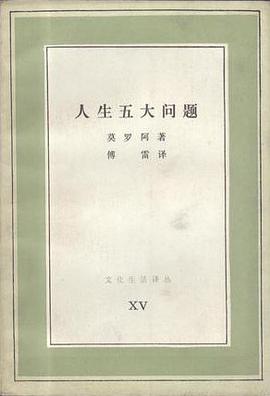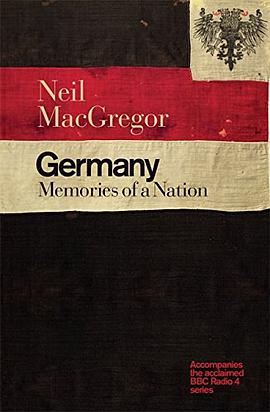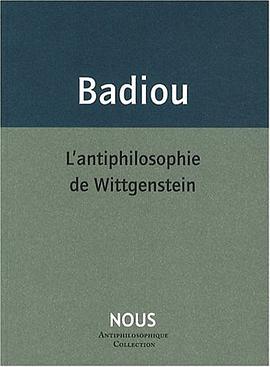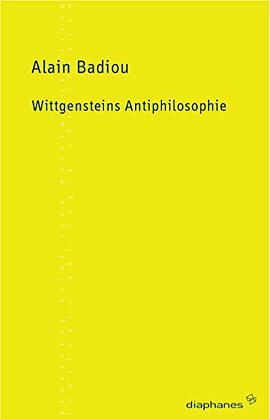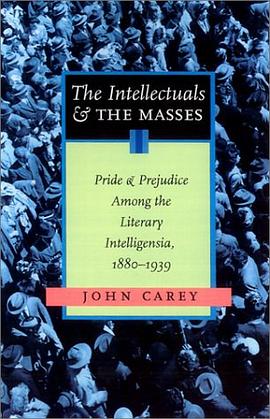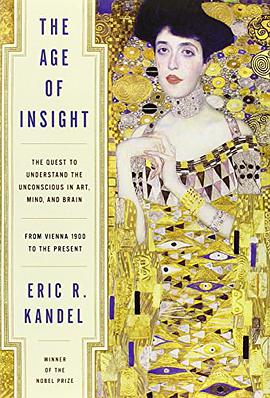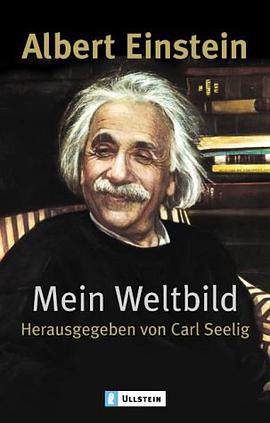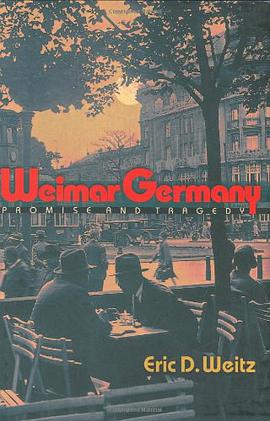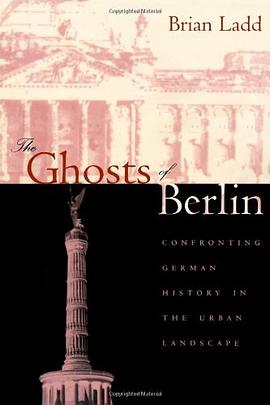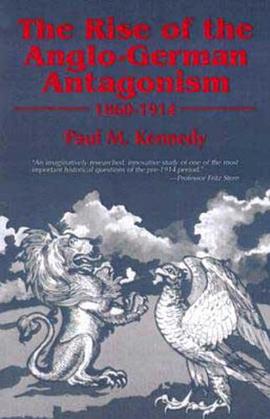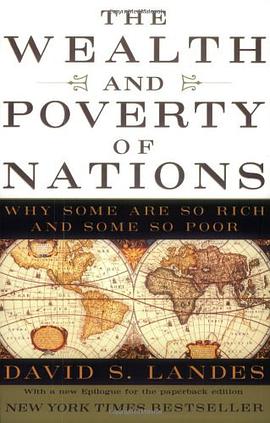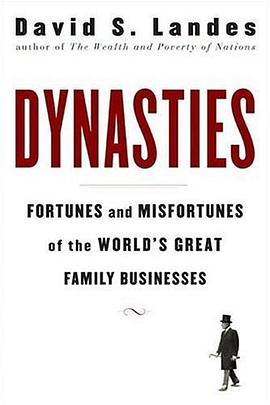歐洲
Germany 豆瓣
作者:
Dr Neil MacGregor
Allen Lane
2014
- 11
From Neil MacGregor, the author of A History of the World in 100 Objects, this is a view of Germany like no other. For the past 140 years, Germany has been the central power in continental Europe. Twenty-five years ago a new German state came into being. How much do we really understand this new Germany, and how do its people now understand themselves? Neil MacGregor argues that uniquely for any European country, no coherent, over-arching narrative of Germany's history can be constructed, for in Germany both geography and history have always been unstable. Its frontiers have constantly floated. Konigsberg, home to the greatest German philosopher, Immanuel Kant, is now Kaliningrad, Russia; Strasbourg, in whose cathedral Johann Wolfgang von Goethe, Germany's greatest writer, discovered the distinctiveness of his country's art and history, now lies within the borders of France. For most of the five hundred years covered by this book Germany has been composed of many separate political units, each with a distinct history. And any comfortable national story Germans might have told themselves before 1914 was destroyed by the events of the following thirty years. German history may be inherently fragmented, but it contains a large number of widely shared memories, awarenesses and experiences; examining some of these is the purpose of this book. Beginning with the fifteenth-century invention of modern printing by Gutenberg, MacGregor chooses objects and ideas, people and places which still resonate in the new Germany - porcelain from Dresden and rubble from its ruins, Bauhaus design and the German sausage, the crown of Charlemagne and the gates of Buchenwald - to show us something of its collective imagination. There has never been a book about Germany quite like it. Neil MacGregor has been Director of the British Museum since August 2002. He was Director of the National Gallery in London from 1987 to 2002. His previous books include A History of the World in 100 Objects and Shakespeare's Restless World, now between them translated into more than a dozen languages.
柏拉图的理想国 豆瓣
La République de Platon
7.4 (7 个评分)
作者:
[法国] 阿兰·巴迪欧
译者:
曹丹红
/
胡蝶
河南大学出版社
2015
- 2
《柏拉图的理想国》是法国当代著名哲学家阿兰•巴迪欧最新的长篇哲学著作。在本书中,巴迪欧模仿柏拉图《理想国》的对话录写作手法,将《理想国》原书中的古希腊背景换成现代社会,并将其中的智者和事件都换成现代的人物及事件,以全新的角度诠释了古代的经典哲学,赋予了《理想国》以现代意义。
“这件事整整持续了六年。
为什么要借柏拉图做这项几乎有些偏执的工作?因为,出于一个明白无误的理由,今日我们尤其需要柏拉图:他将我们引向某个信念,即我们在世上的自我治理意味着某个通向绝对状态的入口已经向我们敞开
所以我将目光投向了《理想国》,希望发掘它对当代社会的重要意义。《理想国》是大师的核心著作,处理的恰好是正义的问题。我依据的是一个古希腊文本,五十四年前,我已经狂热地研究过这个文本。
我首先尝试在它的语言中完全地理解它。我全情投入,不放过任何一个细节,这是我和文本之间面对面的交锋。随后,当我认为完全理解了某个希腊文本片段后,我会写下我所获得的理解引发的一些思考和只言片语。渐渐地,出现了一些更为普遍的方法:完全自由地处理参考文献;科学方面的现代化;形象的现代化;历史的跨越;始终保持真正的、高度戏剧化的对话形式。不可避免地,我自己的思想以及——从更普遍的意义上说——当代哲学背景一直贯穿于我对柏拉图文本的加工过程中,而且可能在我无意这样做时更是如此。
这一工作的结果就是:尽管我从来没有忘记原文,甚至连细节也不曾忘记,但我所获得的结果几乎从来不是通常意义上的“翻译”。柏拉图无处不在,虽然他说的话可能没有一句得到了完全的再现。由此,我希望达到一种效果,始终接近又彻底偏离原文本。只要文本能在今日起到作用,它便能慷慨地赋予这种偏离行为以一种合法性。
归根到底,这就是文本永恒性的表现。”
“这件事整整持续了六年。
为什么要借柏拉图做这项几乎有些偏执的工作?因为,出于一个明白无误的理由,今日我们尤其需要柏拉图:他将我们引向某个信念,即我们在世上的自我治理意味着某个通向绝对状态的入口已经向我们敞开
所以我将目光投向了《理想国》,希望发掘它对当代社会的重要意义。《理想国》是大师的核心著作,处理的恰好是正义的问题。我依据的是一个古希腊文本,五十四年前,我已经狂热地研究过这个文本。
我首先尝试在它的语言中完全地理解它。我全情投入,不放过任何一个细节,这是我和文本之间面对面的交锋。随后,当我认为完全理解了某个希腊文本片段后,我会写下我所获得的理解引发的一些思考和只言片语。渐渐地,出现了一些更为普遍的方法:完全自由地处理参考文献;科学方面的现代化;形象的现代化;历史的跨越;始终保持真正的、高度戏剧化的对话形式。不可避免地,我自己的思想以及——从更普遍的意义上说——当代哲学背景一直贯穿于我对柏拉图文本的加工过程中,而且可能在我无意这样做时更是如此。
这一工作的结果就是:尽管我从来没有忘记原文,甚至连细节也不曾忘记,但我所获得的结果几乎从来不是通常意义上的“翻译”。柏拉图无处不在,虽然他说的话可能没有一句得到了完全的再现。由此,我希望达到一种效果,始终接近又彻底偏离原文本。只要文本能在今日起到作用,它便能慷慨地赋予这种偏离行为以一种合法性。
归根到底,这就是文本永恒性的表现。”
L'antiphilosophie de Wittgenstein 豆瓣
作者:
Alain Badiou
Nous
2004
- 5
Wittgensteins Antiphilosophie 豆瓣
作者:
Alain Badiou
Diaphanes
2008
- 3
Bound Together 豆瓣
作者:
Nayan Chanda
Yale University Press
2008
- 5
Since humans migrated from Africa and dispersed throughout the world, they have found countless ways and reasons to reconnect with each other. In this entertaining book, Nayan Chanda follows the exploits of traders, preachers, adventurers, and warriors throughout history as they have shaped and reshaped the world. For Chanda, globalization is a process of ever-growing interconnectedness and interdependence that began thousands of years ago and continues to this day with increasing speed and ease.
In the end, globalization—from the lone adventurer carving out a new trade route to the expanding ambitions of great empires—is the product of myriad aspirations and apprehensions that define just about every aspect of our lives: what we eat, wear, ride, or possess is the product of thousands of years of human endeavor and suffering across the globe. Chanda reviews and illustrates the economic and technological forces at play in globalization today and concludes with a thought-provoking discussion of how we can and should embrace an inevitably global world.
In the end, globalization—from the lone adventurer carving out a new trade route to the expanding ambitions of great empires—is the product of myriad aspirations and apprehensions that define just about every aspect of our lives: what we eat, wear, ride, or possess is the product of thousands of years of human endeavor and suffering across the globe. Chanda reviews and illustrates the economic and technological forces at play in globalization today and concludes with a thought-provoking discussion of how we can and should embrace an inevitably global world.
Lady Chatterley's Lover 豆瓣
作者:
D. H. Lawrence
William Collins
2013
- 5
The Intellectuals and the Masses 豆瓣
作者:
Carey, John
Chicago Review Press
2005
- 8
In This Landmark Study, John Carey analyzes the elitest views of some of the most highly respected literary icons of the late 19th and early 20th centuries. This book, as defined in his preface, "is about the response of the English literary intelligentsia to the new phenomenon of mass culture."Readers may be shocked to learn that H.G. Wells liked to think that this newly emerged "mass" would be eliminated by plague and atomic bombs; that Yeats wished them to perish in an apocalyptic war against the educated classes and that D.H. Lawrence visualized a huge lethal chamber in which they could be exterminated.John Carey's devastating attack on the intellectuals exposes the loathing which the mass of humanity ignited in many of the virtual founders of modern culture: G.B. Shaw, Ezra Pound, James Joyce, E.M. Forster, Virginia Woolf, T.S. Eliot and others. Professor Carey compares their detestation of common humanity to Nietzsche, whose philosophy helped create the atmosphere leading to the rise of Adolph Hitler.Any student of modern literature and history will find John Carey's incisive book both enlightening and disturbing, an essential read for a full understanding of where we are today.
Verschwundene Arbeit - Das Buch der untergegangenen Berufe 豆瓣
作者:
Rudi Palla
Brandstätter Verlag
2014
- 9
The Age of Insight 豆瓣
作者:
Eric R. Kandel
Random House
2012
- 3
A brilliant book by Nobel Prize winner Eric R. Kandel, The Age of Insight takes us to Vienna 1900, where leaders in science, medicine, and art began a revolution that changed forever how we think about the human mind—our conscious and unconscious thoughts and emotions—and how mind and brain relate to art.
At the turn of the century, Vienna was the cultural capital of Europe. Artists and scientists met in glittering salons, where they freely exchanged ideas that led to revolutionary breakthroughs in psychology, brain science, literature, and art. Kandel takes us into the world of Vienna to trace, in rich and rewarding detail, the ideas and advances made then, and their enduring influence today.
The Vienna School of Medicine led the way with its realization that truth lies hidden beneath the surface. That principle infused Viennese culture and strongly influenced the other pioneers of Vienna 1900. Sigmund Freud shocked the world with his insights into how our everyday unconscious aggressive and erotic desires are repressed and disguised in symbols, dreams, and behavior. Arthur Schnitzler revealed women’s unconscious sexuality in his novels through his innovative use of the interior monologue. Gustav Klimt, Oscar Kokoschka, and Egon Schiele created startlingly evocative and honest portraits that expressed unconscious lust, desire, anxiety, and the fear of death.
Kandel tells the story of how these pioneers—Freud, Schnitzler, Klimt, Kokoschka, and Schiele—inspired by the Vienna School of Medicine, in turn influenced the founders of the Vienna School of Art History to ask pivotal questions such as What does the viewer bring to a work of art? How does the beholder respond to it? These questions prompted new and ongoing discoveries in psychology and brain biology, leading to revelations about how we see and perceive, how we think and feel, and how we respond to and create works of art. Kandel, one of the leading scientific thinkers of our time, places these five innovators in the context of today’s cutting-edge science and gives us a new understanding of the modernist art of Klimt, Kokoschka, and Schiele, as well as the school of thought of Freud and Schnitzler. Reinvigorating the intellectual enquiry that began in Vienna 1900, The Age of Insight is a wonderfully written, superbly researched, and beautifully illustrated book that also provides a foundation for future work in neuroscience and the humanities. It is an extraordinary book from an international leader in neuroscience and intellectual history.
At the turn of the century, Vienna was the cultural capital of Europe. Artists and scientists met in glittering salons, where they freely exchanged ideas that led to revolutionary breakthroughs in psychology, brain science, literature, and art. Kandel takes us into the world of Vienna to trace, in rich and rewarding detail, the ideas and advances made then, and their enduring influence today.
The Vienna School of Medicine led the way with its realization that truth lies hidden beneath the surface. That principle infused Viennese culture and strongly influenced the other pioneers of Vienna 1900. Sigmund Freud shocked the world with his insights into how our everyday unconscious aggressive and erotic desires are repressed and disguised in symbols, dreams, and behavior. Arthur Schnitzler revealed women’s unconscious sexuality in his novels through his innovative use of the interior monologue. Gustav Klimt, Oscar Kokoschka, and Egon Schiele created startlingly evocative and honest portraits that expressed unconscious lust, desire, anxiety, and the fear of death.
Kandel tells the story of how these pioneers—Freud, Schnitzler, Klimt, Kokoschka, and Schiele—inspired by the Vienna School of Medicine, in turn influenced the founders of the Vienna School of Art History to ask pivotal questions such as What does the viewer bring to a work of art? How does the beholder respond to it? These questions prompted new and ongoing discoveries in psychology and brain biology, leading to revelations about how we see and perceive, how we think and feel, and how we respond to and create works of art. Kandel, one of the leading scientific thinkers of our time, places these five innovators in the context of today’s cutting-edge science and gives us a new understanding of the modernist art of Klimt, Kokoschka, and Schiele, as well as the school of thought of Freud and Schnitzler. Reinvigorating the intellectual enquiry that began in Vienna 1900, The Age of Insight is a wonderfully written, superbly researched, and beautifully illustrated book that also provides a foundation for future work in neuroscience and the humanities. It is an extraordinary book from an international leader in neuroscience and intellectual history.
Die Zahl, die aus der Kälte kam 豆瓣
作者:
Rudolf Taschner
Carl Hanser Verlag GmbH & Co. KG
2013
- 7
A History of European Thought in the Nineteenth Century 豆瓣
作者:
John Theodore Merz
Thoemmes Continuum
2000
- 7
John Theodore Merz (1840-1922) was an industrial chemist and philosopher who came to Britain from his native Germany in 1867. His life-long work was dominated by the desire to contribute towards the unification of knowledge. Uniting the two cultures of science and the arts, Merz's "History of European Thought in the Nineteenth Century" is an extended survey of the development of scientific (volumes 1 and 2) and philosophical (volumes 3 & 4) thought. It is not a history of science, but a history of scientific thinking, not a history of philosophy, but a survey of the main philosophical ideas. It was perceived by his contemporaries as a continutation of Whewell's "History of Inductive Science" (1837). As the only study which examines the whole range of continental 19th-century intellect it is an important and essential sourcebook for scholars. Divided into two sections, each containing extensive bibliographic footnotes and an index, it refers to the key works and theories of the major European scientists and philosophers. Volume 2 also contains one of the first attempts by a historian to include the subject of mathematical thought in a general history of intellectual progress. Merz's work was originally published in four volumes between 1896 and 1914. Subsequent unaltered editions followed and it has remained a classic study of the history of European scientific and philosophical debate.
Mein Weltbild 豆瓣
作者:
Albert Einstein
Ullstein Tb
2005
- 3
Weimar Germany 豆瓣
作者:
Eric D. Weitz
Princeton University Press
2007
- 9
Weimar Germany still fascinates us, and now this complex and remarkably creative period and place has the history it deserves. Eric Weitz's Weimar Germany reveals the Weimar era as a time of strikingly progressive achievements--and even greater promise. With a rich thematic narrative and detailed portraits of some of Weimar's greatest figures, this comprehensive history recaptures the excitement and drama as it unfolded, viewing Weimar in its own right--and not as a mere prelude to the Nazi era. Weimar Germany tells how Germans rose from the defeat of World War I and the turbulence of revolution to forge democratic institutions and make Berlin a world capital of avant-garde art. Setting the stage for this story, Weitz takes the reader on a walking tour of Berlin to see and feel what life was like there in the 1920s, when modernity and the modern city--with its bright lights, cinemas, "new women," cabarets, and sleek department stores--were new. We learn how Germans enjoyed better working conditions and new social benefits and listened to the utopian prophets of everything from radical socialism to communal housing to nudism. Weimar Germany also explores the period's revolutionary cultural creativity, from the new architecture of Erich Mendelsohn, Bruno Taut, and Walter Gropius to Hannah Hch's photomontages and Bertolt Brecht and Kurt Weill's theater. Other chapters assess the period's turbulent politics and economy, and the recipes for fulfilling sex lives propounded by new "sexologists." Yet Weimar Germany also shows how entrenched elites continually challenged Weimar's achievements and ultimately joined with a new radical Right led by the Nazis to form a coalition that destroyed the republic. Thoroughly up-to-date, skillfully written, and strikingly illustrated, Weimar Germany brings to life as never before an era of creativity unmatched in the twentieth century-one whose influence and inspiration we still feel today.
The Ghosts of Berlin 豆瓣
作者:
Brian Ladd
University Of Chicago Press
1998
- 11
Brian Ladd examines the ongoing conflicts radiating from the fusion of architecture, history and national identity in present-day Berlin. This volume asks such questions as: how will a reunified Germany confront a diverse and authoritarian past rendered tangible by the Berlin Wall, the Reichstag, Hitler's bunker - even the Brandenburg Gate? How can the rich culture of the past, the artistic and intellectual heritage of Berlin's avant garde be rescued from the Cold War blight of Potsdamer Platz? And can the Neue Wache, Berlin's monumental rememberance of the horrors of tyranny and war, become the structural centre-piece and symbollic guardian of this once and future capital? Ladd surveys the urban landscape and deconstructs the public debates and political controversies emerging from Berlin's past and concludes that the ghosts of Berlin may never, indeed, should never, fade away.
George Boole: His Life and Work 豆瓣
作者:
Desmond MacHale
Boole Press Limited
1985
The Rise of the Anglo-German Antagonism, 1860-1914 豆瓣
作者:
Paul M. Kennedy
Humanity Books
1987
- 10
The German Empire, 1867-1914 and the Unity Movement 豆瓣
作者:
William Harbutt Dawson
General Books LLC
2010
- 1
The Wealth and Poverty of Nations Goodreads 豆瓣
作者:
David S. Landes
W W Norton & Co Ltd
1999
- 5
在线阅读本书
The Wealth and Poverty of Nations is David S. Landes's acclaimed, best-selling exploration of one of the most contentious and hotly debated questions of our time: Why do some nations achieve economic success while others remain mired in poverty? The answer, as Landes definitively illustrates, is a complex interplay of cultural mores and historical circumstance. Rich with anecdotal evidence, piercing analysis, and a truly astonishing range of erudition, The Wealth and Poverty of Nations is a "picture of enormous sweep and brilliant insight" (Kenneth Arrow) as well as one of the most audaciously ambitious works of history in decades.
The Wealth and Poverty of Nations is David S. Landes's acclaimed, best-selling exploration of one of the most contentious and hotly debated questions of our time: Why do some nations achieve economic success while others remain mired in poverty? The answer, as Landes definitively illustrates, is a complex interplay of cultural mores and historical circumstance. Rich with anecdotal evidence, piercing analysis, and a truly astonishing range of erudition, The Wealth and Poverty of Nations is a "picture of enormous sweep and brilliant insight" (Kenneth Arrow) as well as one of the most audaciously ambitious works of history in decades.
Dynasties 豆瓣
作者:
David S. Landes
Viking Adult
2006
- 9
A rich and lively survey of the great families who rule industry by the acclaimed author of The Wealth and Poverty of Nations
Through perseverance, solid ingenuity, and unwavering determination, family-run companies— dynasties—have dominated wealth and business throughout the last two centuries. One third of Fortune 500 firms are family owned and, in most cases, the ideal of the family business is one synonymous with continuity, watchful leadership, and dedication to success. But what happens when bad behavior, extravagance, and laziness—all very real enemies of industry—are allowed to proliferate?
In Dynasties, bestselling author and historian David S. Landes scrutinizes the powerful family businesses that rule both the financial and industrial sectors across Europe, Japan, and America to determine what factors can cause a dynasty to flourish or fail. Focusing on three areas—banking, automobiles, and raw materials—his cast of characters speaks to the power of the family enterprise: Ford, Rothschild, Morgan, Guggenheim, Rockefeller, and Toyoda are but a few whose histories contain all the drama and passion expected when exorbitant money, power, and kinship intersect. Drawing on his immense knowledge of economic history, Landes offers a new reading of the dynastic business plan of the last two centuries—with surprising recommendations for the coming one.
Through perseverance, solid ingenuity, and unwavering determination, family-run companies— dynasties—have dominated wealth and business throughout the last two centuries. One third of Fortune 500 firms are family owned and, in most cases, the ideal of the family business is one synonymous with continuity, watchful leadership, and dedication to success. But what happens when bad behavior, extravagance, and laziness—all very real enemies of industry—are allowed to proliferate?
In Dynasties, bestselling author and historian David S. Landes scrutinizes the powerful family businesses that rule both the financial and industrial sectors across Europe, Japan, and America to determine what factors can cause a dynasty to flourish or fail. Focusing on three areas—banking, automobiles, and raw materials—his cast of characters speaks to the power of the family enterprise: Ford, Rothschild, Morgan, Guggenheim, Rockefeller, and Toyoda are but a few whose histories contain all the drama and passion expected when exorbitant money, power, and kinship intersect. Drawing on his immense knowledge of economic history, Landes offers a new reading of the dynastic business plan of the last two centuries—with surprising recommendations for the coming one.
